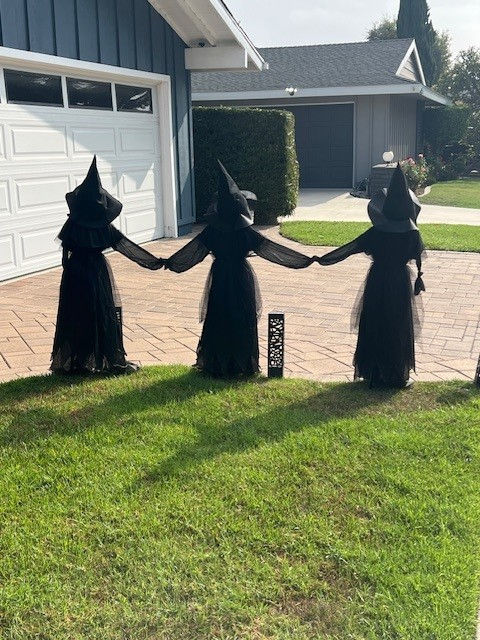What is Psychological Safety? Meet Leila Entezam
- Sherry
- Sep 9, 2021
- 4 min read
I have known Leila Entezam for several years and she has this amazing ability to bring wonderful people together to support each other, learn together and laugh too. She works at the intersection of two worlds. She says those worlds are business and psychology. She is also known by her clients to be an amazing listener and then idea generator for meaningful change and impact. I met with her to learn more about her work in psychological safety.
Sherry: How did you decide to focus on psychology and neuroscience?
Leila Entezam (LE): I was meant to be in both worlds it seemed – first, I had an interest in serving people. Then, I was the one that friends would seek out and go to for advice. On the neuro side, I was pre-med and neuroscience seemed very interesting and so I fell in love with it. I became more and more fascinated with the brain. As I became immersed in the Pre-med program at UCSD with discussions about the brain, shared beliefs about our behavior and how this works inside our organizations my focus became clear. Today it has really become increasingly mainstream.

Sherry: Tell me more about what psychological safety means.
LE: It is this idea that people want to be comfortable being their whole selves all the time. You don’t have separate selves. I want respect and openness to be myself all the time. Today, authenticity is expected and valued. Maybe ten years ago in a corporate setting we were not talking about being an authentic self. Today we are hearing and seeing the importance of this from all generations.
As individuals we are wired to work collectively to create environments that we foster with others. It is increasingly necessary to experience trust and feel safe. The brain does not function at its best when in a heightened stress state and we are not designed to be in that mode for long periods of time. We need to have the freedom to speak out and will endure and thrive if we feel safe.
Sherry: How well is this concept understood – that our brain needs safety?
LE: It is definitely understood, especially as we embrace wellness and wellbeing in our workplaces and in our discussion about hybrid arrangements of work.
Sherry: What are the attributes of a “brain – conscious” culture?
LE: A brain conscious culture places significance on creating psychological safety as part of their core values. They build and embrace empathy and trust, and in return this contributes to peaceful brain states. Then we see greater productivity and innovative thinking. Imagine if you were thinking about survival every day, how much bandwidth would you have to pay attention to creativity, productivity or innovation. It would be exhausting. We see the stress that the pandemic has placed on all of us and that is why the conversation about wellbeing has been raised up by leaders who understand the human side of their business and the value of wellbeing.
Sherry: How do we learn this?
LE: Through books, classes, consultants, other literature. There is an abundance of teachings available. People like Brene Brown, Amy Edmondson, and Dan Siegel to name a few.
I am being asked to help in communication, collaboration, individual leader development so that all of us can show up authentically and with empathy.
Sherry: Has the virtual work environment impacted our sense of safety in teams or with our bosses?
LE: It has made it harder to create a sense of safety. The human side of us can more easily disengage in a zoom call. If I am face to face, I can feel the energy in the room, I can determine how people are reacting.
Your brain has to work harder through this – from an emotional perspective you are tasked more in these different ways, like losing a lot of social and personal cues. The world is clearly staying virtual and or a combination of work modalities so we hope to see continued growth in being more effective in this space as we learn and acclimate.
Sherry: What do you recommend we do to take care of our own wellbeing during such crazy unpredictable times?
LE: We can do simple things – let me suggest a few. One is having a trust circle, a small group of people, you feel safe with and who you can trust. Having that makes a difference. Be active, exercise and consider journaling, or meditating. All of this allows us to re-set and re-energize.
And quiet the noise. We are constantly receiving stimulation, so create some down time, without “doing.”
Sherry: What can leaders do to support us?
LE: Leaders have the ability to model the right behaviors. They can walk the talk and actively create environments that support the individual to be at their best. If a leader is true to him or herself, they become a great role model for the team. For example, there can be one Friday a month we are taking extra time for “connecting” lunch or a zoom workout class together – show examples of where you are stepping into this.
More from Leila
At the intersection of the two worlds (business and psychology), I’m a translator, an interpreter, and a connector. I listen for the need, then strategize on ways to create meaningful change and impact. My resume can provide more details on the scope of this work, awards, publications, etc., but a resume is a menu of my many gigs along the way of making me who I am, it doesn’t paint the picture of how I feel about what I do. You’ll have to meet me in person to fully understand that.
Let’s get started!




Comments